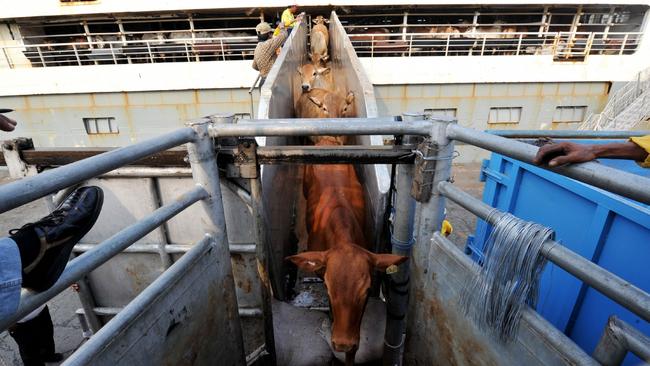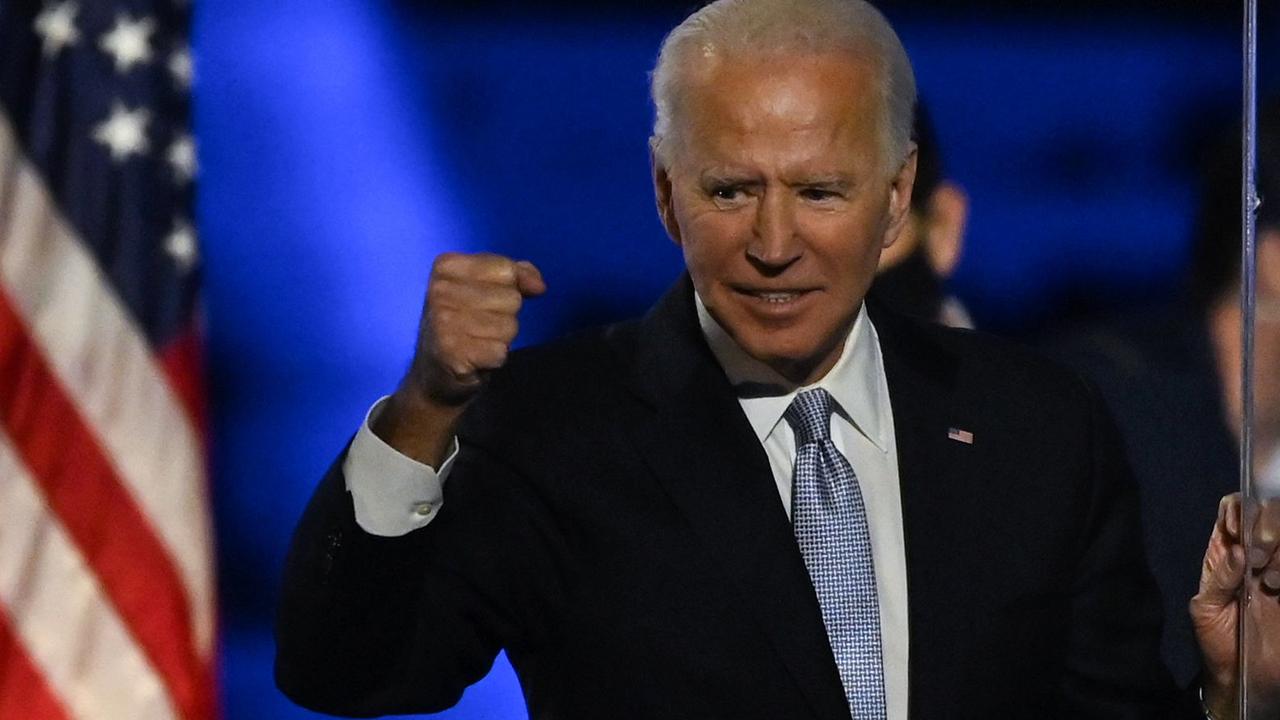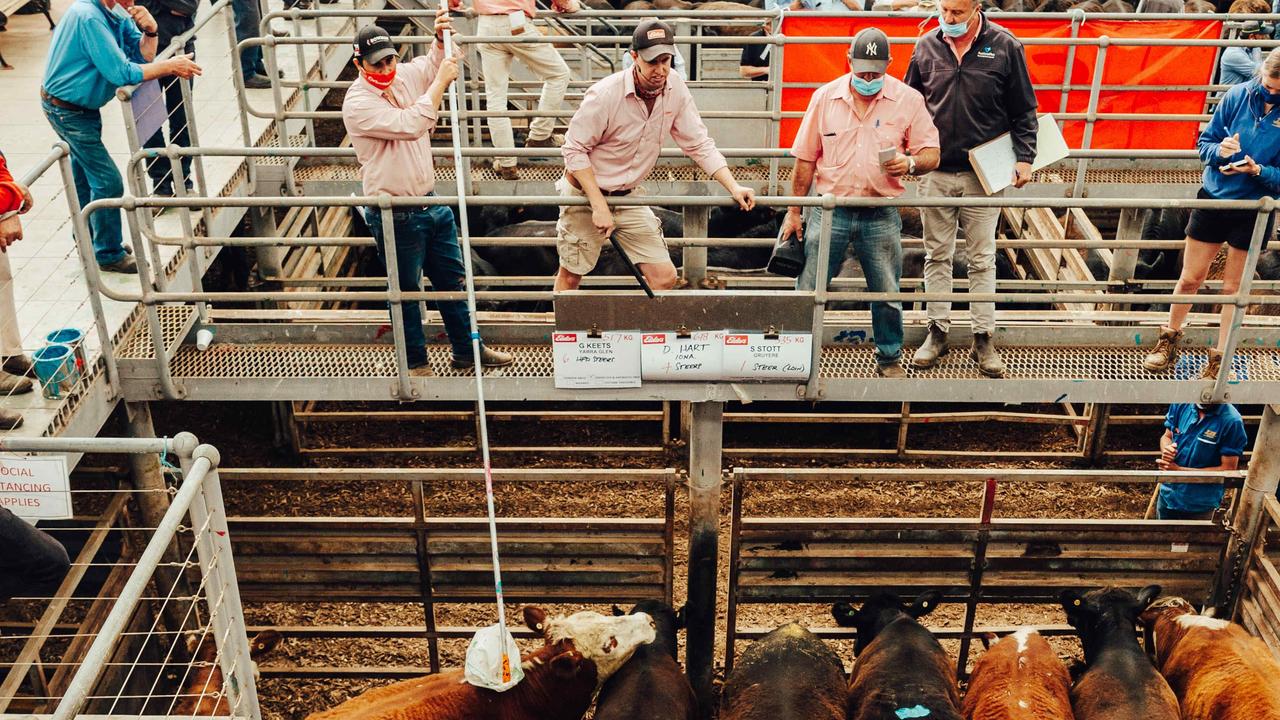Effects of Australian live export cattle ban to Indonesia still felt by beef producers
THE ripple effects of the “catastrophic” 2011 ban on Australian live cattle exports to Indonesia are still being felt across the beef industry.

THE ripple effects of the “catastrophic” 2011 ban on Australian live cattle exports to Indonesia are still being felt across the beef industry.
That’s according to Northern Territory Cattlemen’s Association chief executive Tracey Hayes.
Today marks five years since the former Labor Government issued a blanket ban on live cattle exports to Indonesia, shortly after ABC’s Four Corners aired footage of Australian animals being mistreated in Indonesian abattoirs.
The graphic images, captured by Animals Australia and Four Corners itself, prompted a massive public outcry which heaped pressure on the Government and industry to intervene and shut down the $1.4 billion trade.
Labor MP Joel Fitzgibbon was chief government whip in the House of Representatives at the time of the uproar. He describes it as “the biggest political event I’ve seen in Canberra in my 20 years (in parliament)”.
“I’ve never seen politicians on both sides of the political divide so exercised by an issue,” the current opposition agriculture spokesman told The Weekly Times. “Our email inboxes were full to overflowing on a daily basis, and it was clear that action had to be taken.”
Mr Fitzgibbon, who briefly served as Agriculture Minister in 2013 as part of the second Rudd Government, said he previously thought had he held the portfolio in 2011 he would have handled the situation “a little bit differently”. “But the more I’ve studied the history, the more I’ve realised that really the Government was left with only one of two options: to do nothing or to do everything,” he said.
“It is the ban we probably had to have because it dealt with the immediate uprising, from both sides of politics by the way — that is often missed.”
The ban officially came into effect on June 7, 2011, when then Agriculture Minister Joe Ludwig signed a blanket order a week after initially suspending exports to the 12 Indonesian abattoirs featured in the Four Corners footage. Thousands of kilometres away, in northern Australia, the ban, and its timing, couldn’t have been more poorly received by producers. It came during the thick of the crucial mustering period for cattle — at the end of the northern wet season — as many were readying their stock for the only market they had.
“There were producers with yards and paddocks full of cattle ready to send to market and suddenly that market wasn’t available,” Ms Hayes recalls. “It is fair to say it was our darkest day.
“If you remember back then, Indonesia was the only market option available to producers in the north for the type of cattle that are produced up here. There wasn’t another alternative for that stock.”
Anger among producers soon reached boiling point. Meetings and protests were hastily organised. And as northern cattle began to flood southern markets, placing further pressure on already lacklustre prices, the Coalition seized upon the wave of discontent.
From the opposition benches, Nationals Senator and current Regional Development Minister Fiona Nash recalls hearing the “shocking consequences of kneejerk, populist politics trumping common sense and cool heads”.
“(The ban) devastated farmers and regional economies,” Senator Nash said. “The implicit inference (from the animal-welfare lobby) that farmers don’t care about their animals was an added insult.”
Ms Hayes said by the time the ban was lifted a month later — on July 6, 2011 — many northern cattle producers had quite literally missed the boat.
“It is quite a unique production cycle up here, very much determined by the wet and dry seasons,” she said. “The dry season is when you turn off as many cattle as you can in preparation for the wet season. So that system was completely out of whack for a whole 12-month period and there were some businesses that reported no income at all until the following season.
“Those who had cattle in the yards ready to go, they missed the opportunity to be able to sell them and by the time the market came back on line … there were a very small number of permits available and a lot of businesses missed out in getting their cattle into the allocation.”
Ms Hayes said there was no domestic demand in the north to soak up the additional supplies. “The nearest abattoir was over 2000km away and because they are lightweight feeder animals suitable to be sent somewhere to be fattened (they weren’t suitable for slaughter anyway),” she said.
“There was just a complete crash in confidence. The land values etc completely collapsed and no one was too sure where the bottom of the market was because we went more than 12 months without a property in the entire Northern Territory. There was just no confidence in the northern beef industry.”
Australian live cattle exports fell 42 per cent from 521,002 in 2010, the year before the ban, to 278,581 in 2012, the year after.
Senator Nash said in the aftermath of the ban, she came “face to face” with “people whose families and lives had been devastated”.
“One couple with four children had farmed their land in the Northern Territory for years, and eventually ended up selling the farm,” she said. “Another couple had recently bought into a place and had their dreams shattered. The unforeseen nature of the ban also stole hope from helicopter pilots, hay producers and many other professions which relied directly or indirectly on the live cattle trade.”
Mr Fitzgibbon stands by the decision and said such appropriate action was needed. He said after the Howard Coalition Government banned live cattle exports to Egypt in 2005, also due to animal-welfare concerns, the live cattle industry “hadn’t done really anything to develop the tools government needed to deal with” any future incident.
The Indonesian debacle prompted Labor to introduce the Exporter Supply Chain Assurance System, designed to ensure the welfare of exported Australian livestock to the point of slaughter.
“What we did as a Government was put in place a process which has put the industry on a sustainable footing and indeed allowed the industry to grow,” Mr Fitzgibbon said.
“Theoretically, if ESCAS had been in place prior to 2011, or a system like it, Government might have had another option (to suspending the trade).
“It was either do nothing or do everything. And that’s unfortunate because it had such an impact on not only the north but right to the southern parts of the country. The system that was put in place would have almost been impossible to put in place without a suspension, because the suspension forced the industry to work with the Government.”
Australian Livestock Exporters Council chief executive Alison Penfold said the five-year anniversary of the Indonesian ban also served as “an important marker on progress that has been made” since.
“Five years ago, we got a wakeup call to act on welfare,” Ms Penfold said.
“It was obviously a very challenging time for industry right across and a lot has been said, and probably a lot will be said, about its impact on producers, but what it presented for us in this context is that we had not fully confronted the dilemma of how an industry could enforce and influence animal-welfare standards and practices in overseas facilities.
“It wasn’t government policy or a requirement for us to do so back then, so we were confronted with a significant challenge, albeit it one recognising that our practices were not in alignment with what the Australian community expected of us.”
Ms Penfold said lots had been said “and will be said” about whether or not the industry should have moved more quickly in regards to animal welfare in overseas markets.
“That’s a moot point and we can’t change history on that fact,” she said.
“Five years down the track, you can say — and the ESCAS report of 2015 said — that we have made significant improvements in how exported livestock are treated and slaughtered.
“ESCAS has been a challenge, and so has our training of over 9000 people in 23 markets, and it’s not come with a perfect record but we do know the vast majority of animals we have exported have stayed within supply chains and been supported by that training, that oversight that has been put in place over the past five years.”
Animals Australia spokeswoman Lisa Chalk said while regulations introduced after the Indonesia incident added a “layer of accountability on the industry that was desperately needed”, with “no government oversight on the ground in importing countries, and with exporters effectively still ‘self-regulating’, we have seen cruelty to exported animals continue and in some cases cruelty worse than what was uncovered in Indonesia”.
“Since the introduction of ESCAS, Animals Australia has directly lodged evidence with the Department of Agriculture relating to extensive breaches on 45 occasions,” Ms Chalk said.
“Despite this, no export company has been prosecuted or had their licence suspended.”
On the ground in the Northern Territory, Ms Hayes expected there to be repercussions from the ban “for some time”. A class action by producers against the Federal Government is still before the courts with the National Farmers’ Federation today calling on the Government to settle the compensation case.
“I think that Government had other options (in 2011) — a ban wasn’t necessary or required to have the desired outcome,” she said. “The first control order (suspending exports to the initial 12 abattoirs) was the appropriate one.
“It has really impacted on the trust with our trading suppliers and our reliability as a protein supplier. It has taken us a while to rebuild that trust and repair that reputation.
“At an enterprise level, the market values have restored but there is a legacy debt — there is no question — particularly for those businesses that went for more than 12 months without earning any income. Any debt they did have compounded away.”
Meanwhile, Ms Chalk said Animals Australia would continue to lobby for an end to the livestock export trade.
“Every animal protection group in the world is opposed to live animal export due to the risks and suffering inherent to the transportation of animals by sea,” she said.
“In addition, providing animals to countries where there are no local laws to protect them from cruelty, will inevitably result in animals being abused.
“The key ethical question that needs to be asked and answered when it comes to the millions of animals subjected to live animal export is, ‘Is their suffering necessary?’ All of the countries we send live animals to, also import boxed meat from Australia, and these exports would increase if the alternative of live animals was not readily available.”


